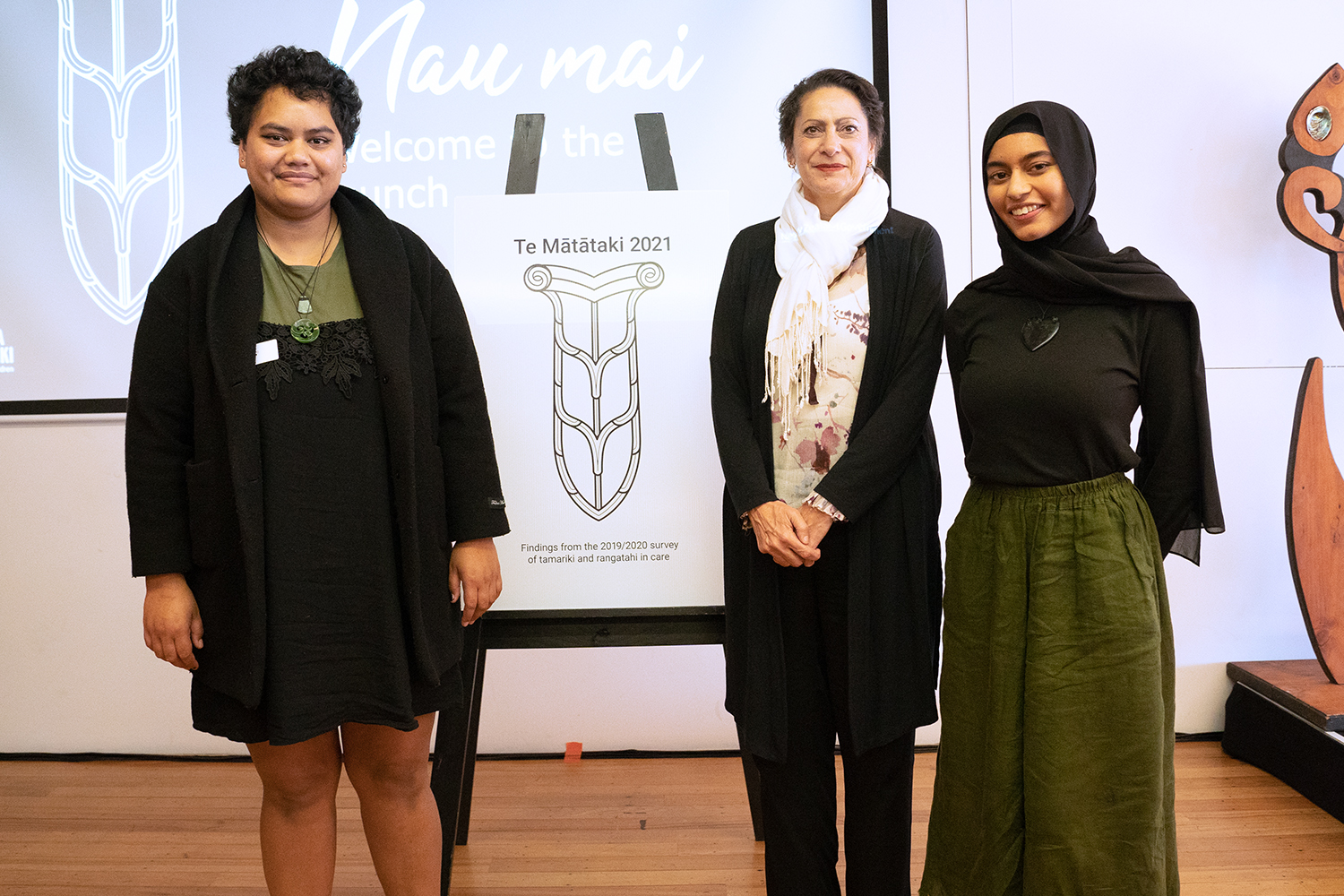Te Mātātaki 2021 report released
Published: May 28, 2021
Oranga Tamariki presents the results of New Zealand’s first national survey of tamariki and rangatahi in care.

Te Mātātaki 2021, a report on findings from a national survey of tamariki and rangatahi in care, was released today.
The report was launched in Wellington at an event attended by Hon. Poto Williams, Associate Minister for Children, and invited guests including tamariki and rangatahi advocates and community partners.
Oranga Tamariki General Manager Voices of Children and Young People Kiri Milne says “We were delighted and privileged to have 1,545 10 to 17 year olds in care choose to take part in the survey.”
Why did we do the survey?
“Fundamentally, tamariki and rangatahi have a right to be heard,” says Kiri. “These rights are enshrined in legislation, the United Nations Convention on the Rights of the Child, and our obligations to tamariki and whānau Māori under Te Tiriti o Waitangi.
By valuing and understanding the unique experiences for tamariki and rangatahi, we are better able to support the needs of whānau.”
One of the priorities for my Youth Council is the voice of those in Youth Justice. There’s often a stigma around dealing with youth. Everyone, especially these young people who are often overlooked in surveys, deserve a chance to make a change in the system.
Ebony Fleming, VOYCE Youth Council representative
What did the results tell us?
The survey results show that most tamariki and rangatahi are rating their experiences in care positively, especially around feeling loved, cared for, settled and accepted, and having somewhere to belong.
However, the results also show that some tamariki experiences are not as positive, particularly around participation in decisions, relationships with their social worker, contact with whānau, knowledge of whakapapa and culture, and feeling optimistic about the future.
The results also show that that there are differences in experiences based on ethnicity and age.
How is Oranga Tamariki responding?
Based on what tamariki and rangatahi shared in the survey, six priority areas have been identified for action:
- Supporting contact with whānau.
- Enabling participation in decisions.
- Strengthening relationships with social workers.
- Providing opportunities to learn about whakapapa and culture.
- Supporting tamariki and rangatahi to have confidence in the future.
- Improving experiences for tamariki and rangatahi who identify as both Māori and Pacific.
“These priorities reflect areas where survey results were not as positive and where there are opportunities to achieve tangible shifts,” Kiri says.
“They also reflect the areas identified independently by a group of care experienced rangatahi, who told us what they think Oranga Tamariki needs to focus on.”
Actions and activities of Oranga Tamariki that will contribute to improvements in the priority areas are outlined in the full report, at the bottom of the page.
What happens next?
Te Tohu o te Ora will be conducted annually and findings will be reported on again in 2022.
“Results over multiple years will help us better understand whether what we are doing is making a difference for tamariki and rangatahi in care – tamariki, rangatahi, whānau and the community can hold us to account on this,” Kiri says.
The full details of the methods used to conduct the survey and analyse the results are in the accompanying methodology report, a companion report to Te Mātātaki.
Our tamariki are experts in their own lives and we need to listen to what they have to say. It’s important that tamariki and rangatahi can influence policies, practices and services that affect them and their whānau.
Hon. Poto Williams, Associate Minister for Children
Find out more
You can read Te Mātātaki 2021 and its companion methodology report on the Oranga Tamariki Evidence Centre ‘research articles’ page.

